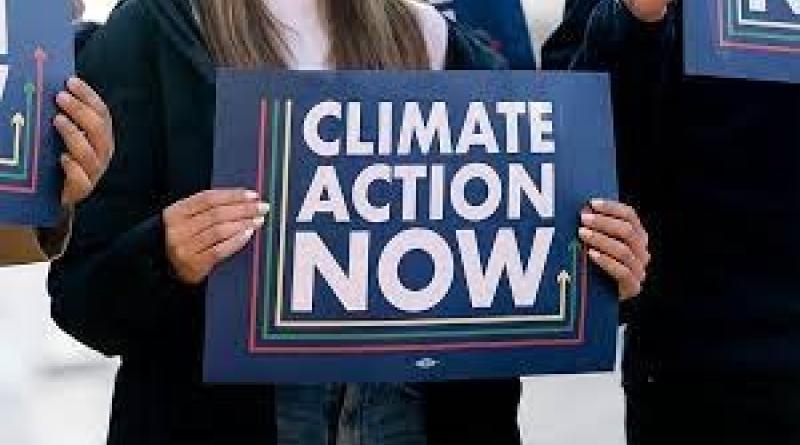I’ve come to accept three truths: Every year for the rest of my life will be the most important year for climate action. Every policy to reduce emissions and build resilience is critical for the future economy and our wellbeing. Every year I’ll be disappointed in the policies that never materialized.
That does not, however, keep me from imagining what policies and government actions could and should happen year to year. As the climate crisis accelerates and political frustrations mount in the new year, 2022 is no exception.
Congressional inaction
The new normal for climate policy is that a stalemate in the Senate will prevent crucial legislative climate actions, particularly during a midterm election year.
I am neither a Democrat nor Republican, but as an American who understands the climate emergency we face, I am profoundly disappointed with lawmakers standing in the way of urgent measures necessary to protect the economy, justice, health, and safety. This should not be a partisan matter, but for some reason the Republican Party, with the help of a Democrat or two, has deemed it so, and seems bent on bringing America to its knees.
While congressional climate action is long overdue, it would be unrealistic to expect Congress to suddenly change its ways — even on this critical issue. So, in absence of legislation, it’s up to the White House and agencies to help address the climate crisis at the federal level. Here are some of the actions I hope to see this year:
Energy reform: Level the playing field
Without the climate actions in the Build Back Better bill — which is stalled courtesy of Sen. Joe Manchin (D-W.Va.) — it is essential that the Department of the Interior finally reform the fossil fuel leasing and permitting programs on our shared public lands.
Curtailing fossil fuel extraction on public lands should be low-hanging fruit for emissions reductions, but action remains stuck as the White House fears political backlash at a sensitive time. However, there is no escaping the fact that 25 percent of our national CO2 emissions come from those shared public lands.
Reforms I proposed nearly a year ago are common-sense changes with climate and environmental benefits that will also bring climate justice to the fore. Whether it is increasing an oil company’s responsibility for abandoned wells and operations, adding fees and increasing royalties to ensure a fair return to the taxpayer, or ensuring that the leasing and permitting programs include climate cost as a factor in decision-making, these reforms do not require congressional action and should be implemented in 2022.
Last fall, Interior proposed some of these reforms in an assessment of the leasing and permitting programs, both onshore and offshore. However, it was virtually silent on climate change and did not require that climate impact accounting be considered in leasing and permitting decisions. This omission should be corrected in 2022, and the department should begin implementing the full range of reforms.
And although it causes the fossil fuel industry to clutch its pearls and wail in protest whenever someone mentions it, a permanent moratorium on new oil and gas leasing is well within the authority of the agency and will have a negligible economic impact. The industry has stockpiled more than enough leased acres to prop itself up for decades.
In fact, over half of the existing leased onshore acres are unused and inactive – a speculative reserve amassed in anticipation of just such a moratorium. Will 2022 finally be the year? This is a wishlist not a prediction, but such a moratorium would be world changing.
The other agency that is ripe for energy and climate reform is the Federal Energy Regulatory Commission (FERC), responsible for approving and regulating oil and gas pipelines but also the grid that moves energy electrons around the country. A 2022 reform package at FERC should ensure that climate costs are figured into permitting, should level the energy playing field by reducing the longstanding permitting advantage of fossil fuel infrastructure, and should modernize regulations to support a reliable and carbon-free grid.
Climate justice: Beyond lip service
The one thing these agencies cannot do is ensure that communities that have long been jerked around by the boom-and-bust cycles of energy extraction are made whole and economically protected from the effects of the inevitable energy transition.
The power of the purse lies with Congress alone, and it is urgent that voters ensure that 2022 candidates know that climate justice is an American priority. Until these communities are economically buffered it is unlikely, for example, that drilling on public lands will be curtailed. There is no climate action without climate justice.
But there is still a lot that federal agencies can do to address climate justice in 2022, without Congress. One White House initiative, known as Justice40, aims to ensure that at least 40 percent of the benefits from government investments in climate and energy go to disadvantaged communities. The guidance was hailed by the environmental justice community but, as with most White House commitments that are not backed by a congressional spending bill, the agencies will have to get very creative to realize anything close to the 40 percent goal.
Nonetheless, the Infrastructure Investment and Jobs Act put some serious dollars in play and agencies are beginning to implement programs that incorporate climate justice criteria. For example, Interior has established justice guidelines for grants and assistance in plugging abandoned wells — methane-spewing relics of industry negligence that are all too often found in or near disadvantaged communities.
However, cost-sharing and scoring requirements keep many vulnerable communities, such as Alaska Native villages, from the assistance necessary to build resilience in the face of climate impacts.
In 2022, all federal agencies should identify a suite of reforms that will allow such investments to flow to impacted communities, and the White House should finalize their guidance to ensure these agencies are held accountable for implementing them.
One of the agencies that has been uncharacteristically quiet on climate justice is the State Department, the agency’s 2021 Climate Adaptation and Resilience Plan didn’t mention the word "justice” once. However, at the 2021 climate conference in Glasgow, President Biden unveiled the President’s Emergency Plan for Adaptation and Resilience, a $3 billion per year tour de force of measures to address climate impacts in developing and vulnerable countries around the world. This was dubbed a “whole-of-government” approach but was clearly a result of strong efforts at the State Department and the U.S. Agency for International Development. So, 2022 will be a good year for justice if these agencies can convince Congress to open the fiscal tap.
This list could go on and on — but in the near term these measures would feel like progress; because we are in the midst of a climate emergency — anything less is unacceptable.
The Biden administration took important strides in 2021. For the sake of the American economy as well as the health and well-being of people around the world, let’s hope it pales in comparison to actions in 2022.
Joel Clement is a senior fellow at the Harvard Kennedy School's Belfer Center for Science and International Affairs and a senior fellow with the Union of Concerned Scientists (UCS). Prior to joining UCS and the Belfer Center, Clement served as an executive for seven years at the U.S. Department of the Interior. Since resigning from public service in 2017, he has received multiple awards for ethics, courage, and his dedication to the role of science in public policy. Follow him on Twitter: @jclementmaine






